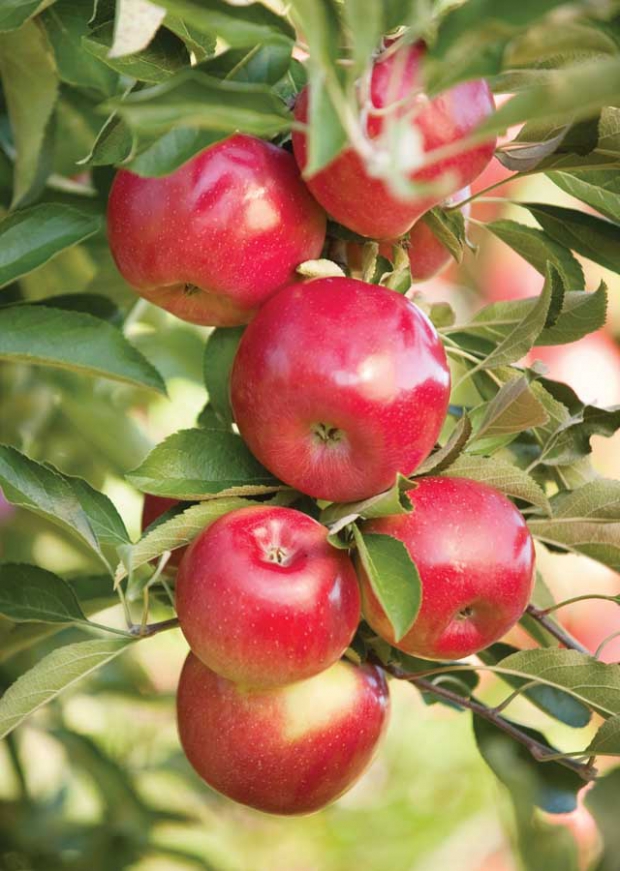
RubyFrost, formerly known as NY2. (Courtesy New York Apple Growers)
The game plan for growing and marketing those new New York apples, SnapDragon and RubyFrost, is unfolding. Production is ramping up—about 400 acres are in the ground, most planted since 2011.
In 2012, New York Apple Growers, LLC, contracted Robin Leous as their business manager. In this role, she works closely with NYAG’s officers and various grower committees.
The marketing committee, chaired by Hudson Valley grower Jeff Crist, holds conference calls biweekly and works with an outside marketing agency, Leous said. “The agency helped us design our packaging, our logo, and our website, and advises us on marketing strategy.”
Other committees keep track of the supply situation, production protocols related to orchard establishment and management, and direct marketing—an important element for many growers.
New last winter
Last year was the first time there was enough production to offer to consumers through supermarkets. RubyFrost had higher volumes than SnapDragon, so, last February, the apple was introduced to consumers in the supermarkets of Wegmans, Hannaford, and Tops.
Once designated New York 2 by Cornell University breeder Dr. Susan Brown, Ruby Frost is the tarter apple of the two and was found to taste best after a couple of months of storage. It will be made available through several retailers in January 2015.
While plans are to market the apple widely, Leous said that initially it would be offered to New York retailers, since the apple is only grown by New York growers. Selling this as a locally grown apple has plenty of appeal in New York, which provides plenty of homegrown customers.
“Our RubyFrost retail test launch went very well, and those who were able to sample the apples in the stores during demos seemed very pleased with their overall taste and crispness,” Leous reported last spring. “We are excited about the upcoming harvest because our production forecast is much larger than last harvest.”
Production of the Honeycrisp cross named SnapDragon, formerly designated New York 1, was only offered through NYAG’s direct-market growers last season. It will come to market in limited quantities this November.
Broad support
The connection with Cornell University has been a good one. Dr. Chris Watkins has evaluated the apples’ storage potential and recommended storage protocols. A Cornell marketing department did consumer testing and worked to develop names for the cultivars.
Brown is working on future apple varieties. While she has said she was pleased with the rollout of these apples as New York-growers-only managed varieties, she also says future varieties will be released in whatever way seems best, including open public release.
When plans for release of the apples were being developed, Cornell University decided to offer the opportunity to grow them only to New York State growers through a newly formed grower group that would get rights to the apples, for which they would pay royalties to the university.
While more than 700 growers would have been eligible to join the “club,” ultimately 145 growers elected to join.
“Nobody really knows what size the market will be,” Leous said. “We had good feedback from consumers after the introduction of RubyFrost last February.”
Leous is pleased with her apple industry job. As a youngster, she worked summers on fruit farms and learned to bud trees working for Fritz Wafler at Wafler Nursery in Wolcott, New York. She graduated with a bachelor’s degree in business and became a consultant. Her work with New York Apple Growers is not full time, she said, but, like the apples, it is growing.
The website at www.newyorkapplegrowers.com provides information intended for both consumers and growers and is designed to foster interaction between them. •






Leave A Comment